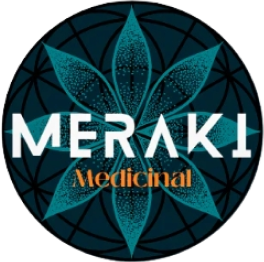Chronic wounds present a significant challenge in healthcare, affecting millions of patients worldwide and causing substantial physical, emotional, and financial burden. For those suffering from diabetic foot ulcers, venous leg ulcers, or pressure ulcers, finding effective treatments can be a frustrating journey. However, an innovative approach using methylene blue photodynamic therapy (MB-PDT) is showing remarkable promise in wound healing.
What is Methylene Blue Photodynamic Therapy?
Methylene blue (MB) is a commonly used dye with antimicrobial properties that has been utilized in medicine for over a century. When combined with photodynamic therapy (PDT) – a treatment that uses light-sensitive compounds activated by light of a specific wavelength – it creates a powerful healing modality.
In MB-PDT, methylene blue is applied topically to wounds and then exposed to a specific wavelength of light. This combination creates a photochemical reaction that produces reactive oxygen species, effectively:
- Eliminating harmful bacteria
- Reducing inflammation
- Promoting tissue regeneration
- Accelerating the healing process
Groundbreaking Research on Methylene Blue Wound Healing
A compelling case report published in the journal Photodiagnosis and Photodynamic Therapy in 2022 has highlighted the remarkable effectiveness of MB-PDT for treating chronic wounds. The study, conducted by Cesar and colleagues, focused on patients with complex, large chronic wounds (greater than 40 cm²) that had previously shown poor healing potential.
Study Protocol
The researchers implemented a straightforward yet effective protocol:
- An aqueous formulation of methylene blue at a concentration of 10 mg/mL (1% w/v) was applied topically to the wounds
- The wounds were then irradiated with a light-emitting diode (LED) light source at 660 nm wavelength
- The light delivered 3.8 J/cm² of energy at an intensity of 9 mW/cm² to the tissue surface
- Treatments were administered once weekly
- Patients were followed from 2018 to 2021 to assess long-term outcomes
Remarkable Results
The outcomes of this MB-PDT approach were nothing short of impressive:
- Significant wound size reduction across all wound types
- Decreased infection markers including odor, exudates, and purulence
- Reduced wound secretion after treatments
- No signs of local reaction or adverse effects
- Absence of complications such as burning sensation, pain, itching, skin erythema, or general malaise
What makes these findings particularly noteworthy is that these wounds had previously been resistant to conventional treatments. The study demonstrated that MB-PDT could be a game-changer for patients with chronic wounds that have been unresponsive to standard care.
Why Methylene Blue Works for Wound Healing
The effectiveness of methylene blue in wound healing can be attributed to several mechanisms:
- Antimicrobial action: MB has broad-spectrum antimicrobial properties that help eliminate bacteria that can impede healing.
- Anti-inflammatory effects: When activated by light, MB helps modulate inflammatory responses that can otherwise delay healing.
- Promotion of tissue regeneration: Evidence suggests that MB-PDT stimulates cellular processes involved in tissue repair and regeneration.
- Low toxicity profile: Unlike some other treatments, MB has minimal side effects when used topically, making it suitable for repeated applications.
- Accessibility and cost-effectiveness: Methylene blue is widely available and relatively inexpensive compared to many advanced wound care products.
If you're ready to give methylene blue a try, use code TRY10 at checkout for 10% off your first order at Meraki Medicinal.
Implications for Chronic Wound Management
The findings from Cesar's research have significant implications for the future of chronic wound management. For patients with diabetic foot ulcers, venous leg ulcers, and pressure ulcers – conditions that often have poor healing outcomes – MB-PDT offers a new ray of hope.
This approach is particularly valuable for:
- Wounds that have failed to respond to conventional treatments
- Patients with compromised healing abilities due to diabetes or other conditions
- Cases where antibiotic resistance is a concern
- Situations where more invasive interventions carry high risk
The Future of Methylene Blue in Holistic Wound Care
At Meraki Medicinals, we're particularly excited about the potential of integrating methylene blue photodynamic therapy into holistic wound care approaches. The non-invasive nature of this treatment aligns perfectly with our philosophy of supporting the body's natural healing mechanisms.
As research in this area continues to evolve, we anticipate seeing MB-PDT become a more mainstream option in wound care protocols. The combination of effectiveness, safety, and relative simplicity makes it an attractive option for both healthcare providers and patients.
Conclusion
The emerging evidence supporting methylene blue photodynamic therapy for chronic wound healing represents a significant advancement in wound care. For patients who have struggled with persistent, non-healing wounds, this approach offers new hope and the possibility of improved outcomes.
As with any medical treatment, MB-PDT should be administered under appropriate medical supervision. If you're dealing with chronic wounds that haven't responded to conventional treatments, discussing this option with your healthcare provider could be a worthwhile step.
Reference:
Cesar GB, Winyk AP, Sluchensci Dos Santos F, Queiroz EF, Soares KCN, Caetano W, Tominaga TT. Treatment of chronic wounds with methylene blue photodynamic therapy: A case report. Photodiagnosis Photodyn Ther. 2022 Sep;39:103016. doi: 10.1016/j.pdpdt.2022.103016. Epub 2022 Jul 14. PMID: 35840009.
This blog post is for informational purposes only and does not constitute medical advice. Always consult with a qualified healthcare professional before beginning any new treatment.

